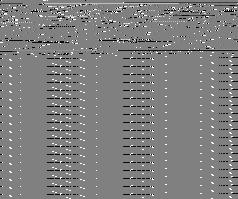Abstract

Optimal therapy for older adults with acute myelogenous leukemia (AML) who achieve remission following induction chemotherapy has not been determined. Options include consolidation chemotherapy (CC) or stem cell transplant (SCT) if an appropriate donor is identified. In order to determine whether SCT improved overall survival (OS) or whether associated toxicity was increased, we performed a retrospective study comparing SCT with CC in this older age group.
All adult patients ages 60 to 75 years with AML in 1st remission (CR1) who underwent a SCT at MSKCC between 2001 and 2013 were reviewed and compared to age-matched patients with AML who achieved CR1 and received CC. A landmark analysis at 3 months following CR1 was used to compare OS for the 2 patient groups. Only SCT patients transplanted by landmark time were included in the analysis. Overall survival was compared using Kaplan-Meier methodology.
Sixty-eight patients were identified for the SCT group. Thirty-two patients were identified for the CC group (Table). Stem cell sources included: peripheral blood (n=63), cord blood (n=4) and bone marrow (n=1). Fifty-six patients received a T cell depleted transplant (32 with ClinMACsTM and 24 with IsolexTM ) and 12 received an unmodified product. Conditioning regimens were busulfan/melphalan/ fludarabine (n=54), melphalan/fludarabine (n=4), cyclophosphamide/fludarabine/thiotepa/ TBI (n=4), fludarabine/busulfan (n=3), busulfan/melphalan (n=2) and thiotepa/fludarabine/TBI (n=1). Donors included matched unrelated (n=28), matched related (n=25), mismatched unrelated (n=11) and mismatched cord blood (n=4). For patients in the CC group, induction chemotherapy included cytarabine in combination with either idarubicin (n=21), daunorubicin (n=10), or mitoxantrone plus etoposide (n=1). Forty-four patients received their transplant by the 3 month landmark and 30 patients in the CC group were alive at the landmark and were included in the OS analysis.
| Patient Characteristics: . | SCT . | CC . |
|---|---|---|
| Number of patients | 68 | 32 |
| Median age at SCT or CC | 65 (60-75) | 65 (60-69) |
| Males/Females | 41/27 | 18/14 |
| Median F/U in mos (range) | 19 (1-83) | 22 (11-75) |
| Number of deaths within 100 days of SCT or 1st cycle CC | 6 (9%) | 2 (6%) |
| Patient Characteristics: . | SCT . | CC . |
|---|---|---|
| Number of patients | 68 | 32 |
| Median age at SCT or CC | 65 (60-75) | 65 (60-69) |
| Males/Females | 41/27 | 18/14 |
| Median F/U in mos (range) | 19 (1-83) | 22 (11-75) |
| Number of deaths within 100 days of SCT or 1st cycle CC | 6 (9%) | 2 (6%) |
Deaths in the SCT group included 4 patients from infection, 1 from treatment-related toxicity, and 1 from relapsed disease. The estimated OS at 2 years in the landmark groups were 64% in the SCT group and 42% in the CC group (p=0.04).
Recognizing the inherent bias when retrospective studies compare SCT and CC, these data support the use of SCT for older patients with AML in CR1 who have an appropriate donor. Despite the older age, there was a statistically significant better OS with low 100 day mortality for those patients who underwent SCT.
No relevant conflicts of interest to declare.
Author notes
Asterisk with author names denotes non-ASH members.

This icon denotes a clinically relevant abstract


This feature is available to Subscribers Only
Sign In or Create an Account Close Modal